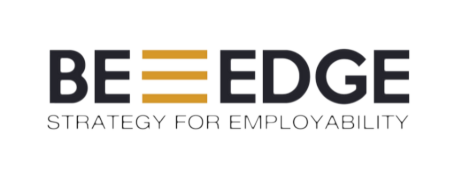
Technical Professional Branching Into Business? Find Your Blue Ocean
By Tom Backus
April 29, 2021
As referenced in the article “Simplified Strategies in Understanding Personal Strategy of Boutique Employability,” crafting your personal strategy revolves around finding one’s Boutique Employability. This entails positioning yourself as a multidimensional professional that brings something unique to the table and differentiates you from every other jobseeker (Ivy, 2020). But how does one stand apart when they are transitioning between defined technical careers and the wide world of business?
To start that discussion – I’d like to pose a thought question. A quick Google reveals that there are nearly 200,000 newly minted MBAs each year, and as of 2019 there are approximately 10.8 million STEM workers in the US economy –but how many can do both?
Elucidating YOUR core
My own story sounds like many others. I jumped directly from an undergraduate degree in STEM (in my case neuroscience) straight into a technical career doing preclinical research for early-stage biotechnology companies. I built years of experience and technical knowledge on drug development, research techniques, and complex biology.
However, it was not until I had the privilege of joining a startup at its earliest stage and witnessing (and playing a small part in) its growth and transformation into a clinical-stage public company that things started to shift. This venture was on the precipice of bringing therapeutics to patients of debilitating diseases that have never been treated. I began to realize how much business know-how and strategy acumen it took to get from 3 people sharing a lab bench to 35 people managing a research portfolio valued around $2b. Great science in a vacuum does not treat a disease. Skilled businesspeople work tirelessly to take the discoveries of great scientists to those who need them most.
One quick MBA later, I was left sitting wondering – how do I use the years of technical knowledge I have accumulated to make an impact on the business side of life science? Possibly more importantly, how do I do it without having to start my career over?

The short answer is to find what is referred to as your Blue Ocean Strategy. This is to mean that you craft your edge, your own unique job market for which no (or very few) others are qualified. You combine your technical understanding and experience with the core business principles that define corporate strategy into something novel. You now serve as the key catalyst between strategy in a vacuum and strategy informed by years of expertise in what is possible, when the best opportunity presents itself, and how to go about getting it accomplished.
With this new concept of the “Technical Businessperson,” the company can eliminate the need for outside expert guidance and uninformed strategy decisions, reduce the disconnect between those who do and those who decide, and raise the level of understanding and influence of technical knowledge in their strategy decisions.
This is demonstrated visually by the Blue Ocean Strategy canvas shown above. By combining your two skillsets, you can create both Boutique Employability and unique value as a candidate rather than having to begin a new career ladder from the bottom.
Developing Trust and Demonstrating YOUR Unique Value
Great in theory, but how do you put it into action? This is where crafting your strategy through the BE-EDGE method comes into play. By mapping out what you can bring to the table from both your past technical career and your business education you can determine your internal resources and capabilities (your strengths). Further, you can identify areas of unmet need in the market (your opportunities).
In your case, your strengths likely revolve around your technical expertise and business education and identified opportunities around a dearth of professionals who are able to walk in both technical and business worlds. I use this as an example, though the possibilities of identified strength and opportunities are endless. Matching strengths and opportunities, however, is crucial. Choosing an opportunity for which you are uniquely suited and qualified based on your strengths is key to developing your personal strategy.
To bring it back to a real-world example, in my case my strengths consisted of drug development expertise, knowledge of biology, and a formal business education. Further, identified opportunities included the rarity of business professionals with an in-depth understanding of drug development and the frequency of key decision drivers to be ‘lost in translation’ as they were explained to non-scientists. Through this exercise, I was able to determine that as a businessperson who could both understand the science behind key decision-drivers in drug development and, importantly, explain it to those who do not, I was uniquely suited to serve as a liaison between the technical and universal.
Exciting YOUR market and Implementing YOUR Strategy
The final piece of this puzzle is implementing your newly formed personal strategy to engage and enlighten your peers and potential employers as to your uniqueness – the Blue Ocean in which only you can swim. I’ll admit that this is where you have found me on my journey. Poised to excite my market and find my next challenge just as you are. There is no one-size-fits-all solution for implementing your strategy, but there are benchmarks you can use to guide your personal journey.
Demonstrate your professional capital – where you’ve practiced and executed your Blue Ocean before to positive results. Reinforce your personal capital – your strengths have been forged by years of experience and specialized training, own them and be proud of them. Finally, leverage your social capital – utilize your professional network of peers, former colleagues, etc. You never know when someone will embark on a new venture and need help, just remember to do the same if and when, down the road, you find yourself with enough ocean to share.
About the Author
 Tom Backus is a Northeastern Double-Husky, graduating with an undergraduate degree in Neuroscience in 2013 and currently finishing an MBA in the D’Amore-McKim School of Business. For the past decade, he has worked in biomedical research, helping to develop drugs for neurodegenerative diseases, musculoskeletal disorders, and hematological conditions. With his business education, he is learning how best to transition from being but a small fish in a large (red) pond to a big one in a very small (blue) ocean.
Tom Backus is a Northeastern Double-Husky, graduating with an undergraduate degree in Neuroscience in 2013 and currently finishing an MBA in the D’Amore-McKim School of Business. For the past decade, he has worked in biomedical research, helping to develop drugs for neurodegenerative diseases, musculoskeletal disorders, and hematological conditions. With his business education, he is learning how best to transition from being but a small fish in a large (red) pond to a big one in a very small (blue) ocean.


